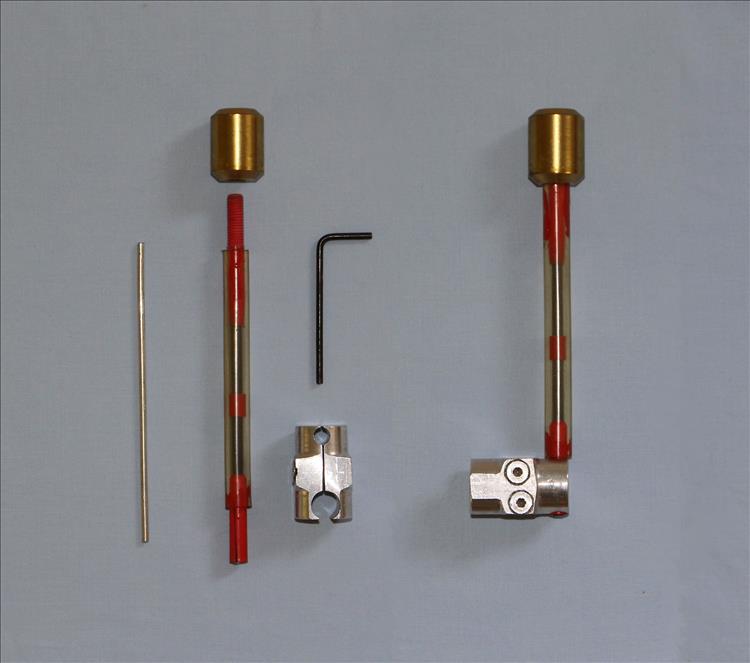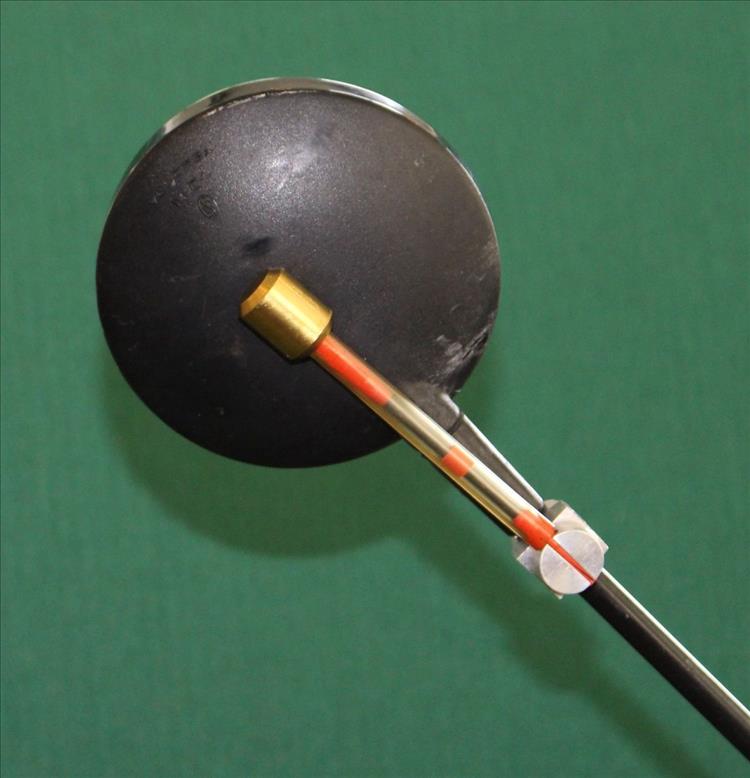Home
Repair And Restoration
A Cure For Vibrating Mirrors
Post Received 19 May 2020
By Mark Noel
A few years ago I was lured into purchasing one of the last Royal Oilfield Classic 500 Bullets. This was a beautifully made machine, with quality diecast engine cases, nice paintwork and the promise of a heritage ride on a bike that was essentially unchanged since the Bronze Age. One had to admire the effort made by the Indian factory to reincarnate this cherished machine, curing all the oil leaks and enhancing the finish in the process. My dream was to use this motorcycle for long distance touring, it being simple, economical and capable of being fixed by a Russian tractor mechanic equipped with little more than a crowbar and a range of hammers.
However, aspirations were quickly demolished as a number of worrying traits emerged during the initial running in period. These included a horrible gearbox full of false neutrals, a jumble of wiring, thunderous noise that increased my tinnitus and a feeble clamp for fastening the front spindle to the fork. Worst of all was the vibration. OK you expect some vibration from a large single cylinder engine without a balance shaft, but this was so bad that it genuinely provided a non-medical alternative to a vasectomy. And I was not ready for that!
In a range of speeds centred at around 40mph this vibration drove a strong resonance in the mirrors so that the rear view was badly impaired, and to my mind rather dangerous. My monthly bath is the time I use for contemplation and invention, and on this occasion I hit upon an idea inspired by the sight of those 'tuned mass dampers' you sometimes see attached to the cables of suspension bridges. These are fitted in such a way that their bob weights wobble with the same period as the cables do in high winds, with the result that energy is transferred from the cables to the dampers, thus reducing their fatigue and prolonging the life of the bridge. Tuned mass dampers incorporating a similar principle are fitted beneath London's Millennium Bridge to suppress swaying when pedestrians fall into lock-step.

Tuned mass dampers attached to suspension bridge cable
It seemed to me that the same concept could be used to cancel acute vibrations in my Bullet's mirrors. First, the natural vibration frequency of one of the mirrors was measured by using a coil-magnet arrangement as sensor, with a light magnet glued to the mirror stem. Plucking the mirror briefly triggered a vibration the frequency of which was measured by connecting the fixed pickup coil to an oscilloscope.
With this information I made a damper with the same vibration frequency that was attached to the mirror stem with a light aluminium clamp. In the first version the spring element was a length of piano wire, with damping via a sheath of PVC tube. This damper worked brilliantly, with a clear rearward view from the mirror at all speeds up to low Mach numbers. However, much to my surprise the wire spring snapped after only about 10 miles, due to fatigue in the bending steel. In my second version the spring element took the form of a 3mm pultruded carbon fibre spar, again with a damping sheath of PVC tube. This device was also highly effective and proved durable over several hundred miles until eventually I sold the machine. Why? Because as a touring bike it was eclipsed by my little Suzuki GN125 which, as I have reported, delivers all you need for a Big Trip on a Small Bike.

Components of my mirror damper

Tuned damper fitted to my Bullet's mirror
Want to share your own engineering solutions to motorcycling problems? Click here.
Reader's Comments
Ren - The Ed¹ said :-
Oscilloscopes, magnets, pickup coils... I think Mark is one of them people wot went to college and got them learning things. I understand the science (just) but I can't imagine actually setting all this up to get a reading. Then, THEN tuning a dampener to match. I'd just bolt random stuff onto the stalk until something happens.
Then it transpires the solution is a Suzuki GN125.
03/07/2020 08:31:10 UTC
Upt'North said :-
Oh the pleasure of reminiscing. The great 70's and 80's when I never saw anything that was following, if it wasn't the mirrors it was the two stroke oil fog stretching miles to the rear.
It's official Mark you're very clever, you proved it by going Japanese.
Upt'North.
03/07/2020 10:09:13 UTC
Ian Soady said :-
Brilliant. Can't imagine why it hasn't caught on.....
03/07/2020 10:09:43 UTC
Upt'North said :-
Cue the "Vapours".
Upt'North.
03/07/2020 10:11:32 UTC
Bogger said :-
I need to find another motorbike related website. You're all far too clever for my liking. Can we not have some stories where people hit things with hammers and such like.
Bogger
03/07/2020 10:24:03 UTC
Ren - The Ed¹ said :-
Fear not Bogger I've gotten sumfink in the pipeline wot won't melt ya brain. No hammers were involved but lots of tape and some half assed not really proven quasi science.
03/07/2020 11:10:51 UTC
Pocketpete said :-
I wanted the bodge it up site and found a mensa site instead.
Far to smart for me.
04/07/2020 12:47:18 UTC
Ren - The Ed¹ said :-
Yeah you know you're in too deep when people start using long words like "oscilloscope" and "dampener". This is trouble with stupid, it don't know it's stupid until it reads things like this.
04/07/2020 13:52:00 UTC
nab301 said :-
Interesting idea, and riding an Enfield I can only agree with your comments but unfortunately don't have the means to produce the cure. Others I believe have rebuilt the engine / crankshaft with different balance factors to cure vibration in general but there is hope for a cure without such drastic measures!
Nigel
04/07/2020 21:47:07 UTC
turtle said :-
Glad to find another engineer who has the same problem and the same thought process I did. I just finished my lab in college about vibration measurement, so I was thinking of stealing a sensor for a couple days, before I thought better of it when I saw the $300 price tag. Maybe if I had an oscilloscope and maybe a speaker? Theoretically it could work, but I have neither a speaker nor an oscilloscope.
I eventually gave up and bought https://accessories.hitchcocksmotorcycles.com/accessory-shop/mirrors/27049 these mirror dampeners, since my 1989 Honda Transalp was suspiciously missing theirs. Have yet to see if they work yet, but will next week. Worth looking into, since that is how modern engineers seem to deal with vibration.
07/03/2024 08:11:40 UTC
Ren - The Ed¹ said :-
Hi turtle. The rubber mounts you're getting - I can see how the rubber damps the vibrations but with the mirror being "softly mounted" to the bike is there a risk that other vibrations at other frequencies becomes a problem? I suppose if those new frequencies are never reached (too high, too low) then you'll be fine. Let us know if they fix the problem.
08/03/2024 07:59:48 UTC
Name
Comment
Add a RELEVANT link (not required)
Upload an image (not required) -
Uploading...
Home
Repair And Restoration